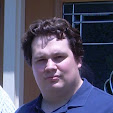As I've previously stated my work on the thunderbolt is more or less on hold until I get more materials. I can still work on small details and I am, but I can't make any major head way on the body until I get the materials to cast the molds of the engine mounts. So I've already ordered them so now it's just a waiting game. In the mean time I thought I'd post some information about the materials I'm using for this project.
The first thing is obviously the Styrene, or plastic, materials I'm using. For the large part, the majority of my styrene is coming from Plastruct. They've been around for a while and offer a truely staggering array of extruded styrene shapes and forms. I've also purchased Styrene from another company called EveryGreen Scale models. Their selection isn't as huge as Plastructs', but they have some stuff that Plastruct doesn't.
Take a look at the engine master I built. As I previously mentioned, it's a series of tubes set into one another with other detail added to that.
Here is a structural break down of what I used to build the engine master:
Because I will be referring to different sizes, I have color coded this passage to match with the diagram. The green tube is a length of Plastruct's TB-24 piping, which is measured at 19mm outside diameter. The pink is TB-28 tubing and measures at 22mm. The blue, which slips around the forward most length of TB-28, is a segment of TB-32 and is the largest piece of Plastructs inventory of piping I've needed to order yet. It measures in at 25mm outer diameter. The sea foam green 'C' is a wrap of textured plastic from EverGreen's assortment. The precise one I used in this case is listed as E-5 '4529' "Metal Siding" and is sold in sheets of 100 square inches. Apply a little bit of heat and it becomes pliable and can simply be glued into the length of TB-28.
The floating yellow squares are just panels of .5mm thick styrene I cut and glued to the last section of exposed TB-24. The teal length between the segments of TB-28 are simply lengths of 1mm thick Hex-rod. Plastruct's got these listed as MRX-60. I also got .1mm lengths of these hex rods to become the bolts on the sides of the engine you see in the finished product.
And that's the breakdown of how I built the master for the back half of the engine.
The forward intake was a similar process but needed some innovation to accomplish.
Like with the back section of the engine the intake housing is built out of 2 lengths of pipe set into one another. The inner section, shown in pink is a length of TB-28 while the blue is a length of TB-32. The red is a disc of 1mm thick sheet styrene. For the intake blades I had to get creative. I make 4 discs of .1mm thick styrene, the same diameter as the inside of the TB-28. I then cut those dics into 8 segments, like a pizza. Then I glued down each blade seperatly so that each successive blade was over half of the previous one. I had to get a little fiddly with the last two or three in order to get them to line up properly but it worked out. Then I took a hold punch that measured just under 5mm in diameter and punched out the center of the assembled fan blades.
I then took a length of Plastruct's MR-190 5mm rod and sanded one end down to a rounded nub and then put that through the hole I made in the fan blades. To help simplify it all out I attached a scrap piece of styrene to back of the .1mm disc.
And there you have how I build the engine masters for the thunderbolt fighter.
Sunday, January 06, 2013
thought I'd provide some information
Posted on 2:17 PM by Michael
Subscribe to:
Post Comments (Atom)











0 comments:
Post a Comment